 Plenary Speakers
Plenary Speakers
Finalized List of ICOPS
2021 Plenary Speakers
2021 Plenary Speakers
Michael Lieberman
2020 Marie Curie-Sklodowska Winner
UC Berkeley
“Nonlinearity and Waves in Capacitively-Coupled Plasma Processing Discharges"
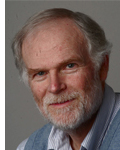 Michael A. Lieberman received his B.S. and M.S. degrees from the Massachusetts Institute of Technology in 1962 and his Ph.D. degree from Massachusetts Institute of Technology in 1966. He joined the Department of Electrical Engineering and Computer Sciences (EECS) at Berkeley in 1967. In 1971, he received the Distinguished Teaching Award of the Berkeley campus. He is currently a Professor in the Graduate School at Berkeley.
Michael A. Lieberman received his B.S. and M.S. degrees from the Massachusetts Institute of Technology in 1962 and his Ph.D. degree from Massachusetts Institute of Technology in 1966. He joined the Department of Electrical Engineering and Computer Sciences (EECS) at Berkeley in 1967. In 1971, he received the Distinguished Teaching Award of the Berkeley campus. He is currently a Professor in the Graduate School at Berkeley.
He is a Fellow of the American Physical Society (APS), the American Association for the Advancement of Science (AAAS), the Institute of Electrical and Electronic Engineers (IEEE), the American Vacuum Society, the Institute of Physics (Great Britain), and the International Plasma Chemistry Society. He received the IEEE Plasma Science and Applications Award in 1995, the von Engel Prize of the International Union of Pure and Applied Physics in 2005, and the American Physical Society Will Allis Prize for Study of Ionized Gases in 2006.
Professor Lieberman's research interests have been theory, experiments, and computer simulations of low temperature plasmas, fusion plasmas, and nonlinear dynamical systems. He has written over 240 journal articles and two books. His first monograph, co-authored with Prof. A.J. Lichtenberg, Regular and Stochastic Motion, was published by Springer-Verlag in 1983; a Russian language edition subsequently appeared. A second, more comprehensive edition, Regular and Chaotic Dynamics, was published in 1991. His second book, also co-authored with A.J. Lichtenberg, Principles of Plasma Discharges and Materials Processing, was published by John Wiley and Sons in 1994. An expanded second edition was published in 2005. Two Chinese language and two Japanese language editions have since been published.
Farhat Beg
PSAC Winner
UC San Diego
“The Good, the Bad and the Ugly:
The Story of fast ignition and a path forward”
The Story of fast ignition and a path forward”
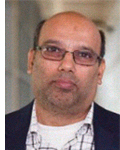 Farhat Beg is a Professor of Engineering Science at the Department of Mechanical and Aerospace Engineering at the University of California, San Diego. He received his Ph.D. from Imperial College London. He joined University of California San Diego as a faculty in 2003. His expertise is in the field of inertial and magneto inertial fusion, laser plasma interaction, pulsed power-driven X- and Z-pinches, and neutron sources. He has published over 250 papers in refereed journals, including Nature, Nature Physics, Nature Photonics and Physical Review Letters, with total citations exceeding 9000 with an H-index of 49, according to the ISI Web of Knowledge. He is the fellow of the American Physical Society (APS), the Institute of Electrical and Electronics Engineers (IEEE) and the American Association for the Advancement of Science (AAAS). He has been a winner of the Department of Junior Faculty Award (2005) and IEEE Early Career Award (2008). He has served twice as the Chair of the High-Energy Density Science Association (HEDSA) in 2009/2010 and in 2017/2018. He also served as the Chair of the National Ignition Facility User Group from 2017-2019.
Farhat Beg is a Professor of Engineering Science at the Department of Mechanical and Aerospace Engineering at the University of California, San Diego. He received his Ph.D. from Imperial College London. He joined University of California San Diego as a faculty in 2003. His expertise is in the field of inertial and magneto inertial fusion, laser plasma interaction, pulsed power-driven X- and Z-pinches, and neutron sources. He has published over 250 papers in refereed journals, including Nature, Nature Physics, Nature Photonics and Physical Review Letters, with total citations exceeding 9000 with an H-index of 49, according to the ISI Web of Knowledge. He is the fellow of the American Physical Society (APS), the Institute of Electrical and Electronics Engineers (IEEE) and the American Association for the Advancement of Science (AAAS). He has been a winner of the Department of Junior Faculty Award (2005) and IEEE Early Career Award (2008). He has served twice as the Chair of the High-Energy Density Science Association (HEDSA) in 2009/2010 and in 2017/2018. He also served as the Chair of the National Ignition Facility User Group from 2017-2019.
Allen Garner
Purdue University
"Diode Physics: From Child-Langmuir
to Paschen’s Law”
to Paschen’s Law”
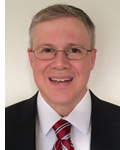 Allen Garner received the B.S. degree (Hons.) in nuclear engineering from the University of Illinois at Urbana-Champaign, in 1996, the M.S.E. degree in nuclear engineering from the University of Michigan, Ann Arbor, in 1997, the M.S. degree in electrical engineering from Old Dominion University, Norfolk, VA, USA, in 2003, and the Ph.D. degree in nuclear engineering from the University of Michigan in 2006. From December 1997 to December 2003, he served as an active duty submarine officer in the U. S. Navy. From 2006 to 2012, he was an Electromagnetic Physicist with GE Global Research Center, Niskayuna, NY, USA. In August 2012, he joined the School of Nuclear Engineering, Purdue University, West Lafayette, IN, USA, where he is currently an Associate Professor. He is also a Captain with the U.S. Navy Reserves. His research interests include electron emission, gas breakdown, high-power microwaves, and biomedical applications of pulsed power and plasmas. He received the 2016 IEEE Nuclear and Plasma Sciences Early Achievement Award and two Meritorious Service Medals. He served as the Technical Program Chair for the 2016 IEEE IPMHVC and is a member of the IEEE IPMHVC Executive Committee and the Administrative Committee of the Dielectrics and Electrical Insulation Society.
Allen Garner received the B.S. degree (Hons.) in nuclear engineering from the University of Illinois at Urbana-Champaign, in 1996, the M.S.E. degree in nuclear engineering from the University of Michigan, Ann Arbor, in 1997, the M.S. degree in electrical engineering from Old Dominion University, Norfolk, VA, USA, in 2003, and the Ph.D. degree in nuclear engineering from the University of Michigan in 2006. From December 1997 to December 2003, he served as an active duty submarine officer in the U. S. Navy. From 2006 to 2012, he was an Electromagnetic Physicist with GE Global Research Center, Niskayuna, NY, USA. In August 2012, he joined the School of Nuclear Engineering, Purdue University, West Lafayette, IN, USA, where he is currently an Associate Professor. He is also a Captain with the U.S. Navy Reserves. His research interests include electron emission, gas breakdown, high-power microwaves, and biomedical applications of pulsed power and plasmas. He received the 2016 IEEE Nuclear and Plasma Sciences Early Achievement Award and two Meritorious Service Medals. He served as the Technical Program Chair for the 2016 IEEE IPMHVC and is a member of the IEEE IPMHVC Executive Committee and the Administrative Committee of the Dielectrics and Electrical Insulation Society.
Daniel Gordon
Naval Research Laboratory
"Intense gamma ray pulses from ultra-relativistic laser-plasma interactions"
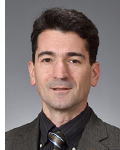 Dr. Daniel Gordon is head of the Laser Physics Section in the Plasma Physics Division at the Naval Research Laboratory. His research on ultra-intense laser-plasma interactions encompasses early experiments on beatwave and self-modulated laser wakefield acceleration, modeling of laser-plasma accelerators using particle-in-cell codes, and quantum scale theory and simulation of ionization and quantum electrodynamics processes. His research interests also include hydrodynamics simulation, and experiments on long wavelength, high power, radiation sources.
Dr. Daniel Gordon is head of the Laser Physics Section in the Plasma Physics Division at the Naval Research Laboratory. His research on ultra-intense laser-plasma interactions encompasses early experiments on beatwave and self-modulated laser wakefield acceleration, modeling of laser-plasma accelerators using particle-in-cell codes, and quantum scale theory and simulation of ionization and quantum electrodynamics processes. His research interests also include hydrodynamics simulation, and experiments on long wavelength, high power, radiation sources.
Ling-Hsiao Lyu
National Central University
"Generations of nonlinear waves in magnetized plasmas and their applications to the long-term unsolved problems in space physics and astrophysics"
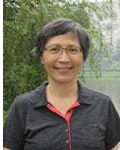 Ling-Hsiao Lyu is currently an Associate Professor in the Department of Space Science and Engineering at the National Central University in Taiwan. She graduated with M.S. in Space Physics from the National Central University in 1983 and received her Ph.D. in Space Physics from the University of Alaska Fairbanks in 1991. Her research interests include space plasma physics, numerical simulations, solar physics, magnetospheric physics, interplanetary space physics, and shock waves.
Ling-Hsiao Lyu is currently an Associate Professor in the Department of Space Science and Engineering at the National Central University in Taiwan. She graduated with M.S. in Space Physics from the National Central University in 1983 and received her Ph.D. in Space Physics from the University of Alaska Fairbanks in 1991. Her research interests include space plasma physics, numerical simulations, solar physics, magnetospheric physics, interplanetary space physics, and shock waves.
Sabrina Nagel
Lawrence Livermore National Lab
“The crucial role of diagnostics in improving our understanding of High-Energy-Density science”
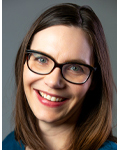 Sabrina Nagel is the lead scientist for the National Ignition Facility’s (NIF) Dynamic X-ray Detectors Group. She received her MA in physics from the University of Texas at Austin in 2004 and, in 2009, earned her PhD from Imperial College London, where she studied short-pulse, high-intensity laser plasma interactions. She joined Lawrence Livermore National Laboratory (LLNL) in 2011 and started working on X-ray detectors for the NIF, developing novel capabilities for taking X-ray images of inertial-confinement-fusion (ICF) experiments with unprecedented temporal resolution. In 2018 she became a group leader in the Physics Division at LLNL and the lead scientist for the NIF’s Dynamic X-ray Detectors Group. As such she works closely with engineering and operations and is a key contributor for inertial-confinement-fusion and high-energy-density science campaigns on the NIF.
Sabrina Nagel is the lead scientist for the National Ignition Facility’s (NIF) Dynamic X-ray Detectors Group. She received her MA in physics from the University of Texas at Austin in 2004 and, in 2009, earned her PhD from Imperial College London, where she studied short-pulse, high-intensity laser plasma interactions. She joined Lawrence Livermore National Laboratory (LLNL) in 2011 and started working on X-ray detectors for the NIF, developing novel capabilities for taking X-ray images of inertial-confinement-fusion (ICF) experiments with unprecedented temporal resolution. In 2018 she became a group leader in the Physics Division at LLNL and the lead scientist for the NIF’s Dynamic X-ray Detectors Group. As such she works closely with engineering and operations and is a key contributor for inertial-confinement-fusion and high-energy-density science campaigns on the NIF. Her published work ranges from innovative diagnostics techniques and their experimental implementation at large-scale facilities such as the NIF, to the study of ICF implosions, and Rayleigh-Taylor and Richtmyer-Meshkov instabilities in laser-driven shock tubes. Her work on pulse dilation instrumentation was a R&D100 Finalist in the category of Market Disruptor Product in 2015 and, in 2017, she was part of the team that won the R&D100 award for their work on geometrically enhanced photocathodes.
Donald Shiffler
Air Force Research Lab
"Directed Energy Research at the Air Force: Where is the plasma? "
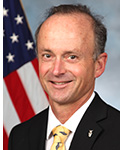 Dr. Donald A. Shiffler, Jr., a member of the scientific and technical cadre of senior executives, is Chief Scientist of the Directed Energy Directorate, Air Force Research Laboratory, Kirtland Air Force Base, New Mexico. He serves as the senior science and technology advisor for the directorate’s research and development of high energy airborne lasers, airborne high power microwave systems and dense plasmas, long-range non-lethal weapons, laser communication systems, and sophisticated optical system technologies for space situational awareness.
Dr. Donald A. Shiffler, Jr., a member of the scientific and technical cadre of senior executives, is Chief Scientist of the Directed Energy Directorate, Air Force Research Laboratory, Kirtland Air Force Base, New Mexico. He serves as the senior science and technology advisor for the directorate’s research and development of high energy airborne lasers, airborne high power microwave systems and dense plasmas, long-range non-lethal weapons, laser communication systems, and sophisticated optical system technologies for space situational awareness.
As Chief Scientist, Dr. Shiffler oversees the directorate’s research in support of the development of transformational defense concepts. Dr. Shiffler identifies research gaps and analyzes advancements in a broad variety of scientific fields relevant to directed energy technology and imaging research technologies. He encourages new and innovative initiatives, as well as adjustments to existing directed energy programs to meet current, emerging, and future Air Force needs. These technologies develop and transition into military systems for the Air Force and the Department of Defense.
He is the primary authority for the technical content and quality of the directorate’s more than $267 million annual science and technology portfolio. He serves as the principal technical interface with the directorate’s workforce of more than 960 military and civilian scientists, engineers, contractors, and support staff located at numerous state-of-the-art research laboratories and testing structures at Kirtland AFB; a testing site at the U.S. Army’s White Sands Missile Range, New Mexico; and the Air Force Maui Optical and Supercomputing site in Hawaii.
Dr. Shiffler’s career with the AFRL began in January 1995 at the Philips Research Laboratory, Kirtland AFB, in the areas of High Power Microwave sources, pulsed power, and explosive pulsed power. His research has focused on HPM technology, including basic physics, HPM sources, pulsed power, vacuum electronics, and novel materials. Dr. Shiffler’s work directly enabled the Counter-electronics HPM Advanced Missile Project Joint Capability Technology Demonstration. His career includes experience as a research scientist and professor in academia. Dr. Shiffler has published more than 55 refereed technical papers in national and international publications. He has presided over numerous conferences, has 13 domestic and international patents on five continents, and led several Cooperative Research and Development Agreements, demonstrating transition of research to industry.
Umair Siddiqui
Phase Four
“Development of electrodeless RF plasma propulsion for small satellites”
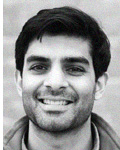 Umair Siddiqui is the CTO at Phase Four, Inc. He leads the development and production of Phase Four’s Radio Frequency Thruster an RF-plasma based electric propulsion system that is scalable from nanosatellites up to existing large satellites. His previous research focused on localized heating mechanisms in helicon plasmas, multidimensional laser-induced fluorescence investigations in magnetic presheath plasma boundaries, spacecraft charging in the low Earth orbit environment, and fundamental plasma sheath physics. Previous to Phase Four, Dr. Siddiqui conducted research with Prof. Lynch at Dartmouth College, with Prof. Hershkowitz at the University of Wisconsin - Madison, and with Prof. Scime at West Virginia University.
Umair Siddiqui is the CTO at Phase Four, Inc. He leads the development and production of Phase Four’s Radio Frequency Thruster an RF-plasma based electric propulsion system that is scalable from nanosatellites up to existing large satellites. His previous research focused on localized heating mechanisms in helicon plasmas, multidimensional laser-induced fluorescence investigations in magnetic presheath plasma boundaries, spacecraft charging in the low Earth orbit environment, and fundamental plasma sheath physics. Previous to Phase Four, Dr. Siddiqui conducted research with Prof. Lynch at Dartmouth College, with Prof. Hershkowitz at the University of Wisconsin - Madison, and with Prof. Scime at West Virginia University. 